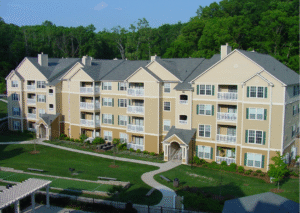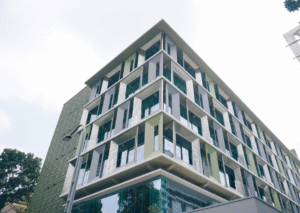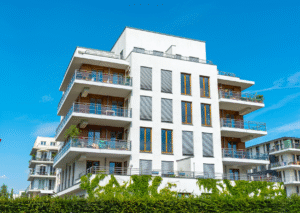What Are Fix and Flip Loans and Why Are They Popular Among New Investors?
Fix and flip loans are short-term financing tools designed specifically for real estate investors who purchase properties in need of repair, renovate them, and sell them for a profit. These loans help bridge the gap between the time an investor buys a property and the time it’s sold after renovation. Unlike traditional mortgages, fix and flip loans prioritize the after-repair value (ARV) of the property rather than the borrower’s income or credit score.
For beginners, these loans are attractive because they offer fast funding, flexibility, and leverage. According to the National Association of Realtors (NAR), over 10% of all home sales in the U.S. in recent years have involved some form of investment flipping (NAR, 2022). This popularity has increased demand for loan products tailored to short-term renovations.
How Do Fix and Flip Loans Work in Practice?
Fix and flip loans typically work in phases:
- Acquisition – Funds are used to purchase the property.
- Rehabilitation – Additional funds cover renovation costs.
- Resale – After renovation, the investor sells the property at a higher value.
Most lenders disburse funds in “draws” after verifying that specific renovation milestones have been met. Interest is usually paid monthly, with the principal due upon sale or at the loan’s term end—generally 6 to 12 months.
This process allows investors to move quickly, especially in competitive markets. However, timing and budgeting are critical, as cost overruns or market shifts can reduce profit margins.
Who Is Eligible for a Fix and Flip Loan?
Eligibility varies by lender but generally depends on these criteria:
- Experience: Some lenders prefer borrowers with prior renovation experience, but many beginner-friendly programs exist.
- Property Type: Most loans are for residential properties, including single-family homes, duplexes, and small multifamily buildings.
- Project Plan: Lenders often require a detailed scope of work, including timelines and costs.
- Credit & Financials: While traditional credit scores may be less important, lenders assess liquidity and the investor’s exit strategy.
Companies like No Limit Investments offer flexible terms and options specifically tailored for beginners looking to start with small to mid-sized projects.
What Are the Benefits of Fix and Flip Loans for New Investors?
Fix and flip loans provide several key advantages:
- Fast Funding: Approvals and disbursements can happen in days, not weeks.
- Asset-Based Lending: Loans are based on ARV rather than borrower income.
- Higher Leverage: Some lenders offer up to 90% of purchase price and 100% of rehab costs.
- Scalability: Successful projects can lead to repeat business and portfolio growth.
These benefits allow beginners to access real estate markets with less upfront capital and build investment experience rapidly.
What Are the Risks and Challenges of Using Fix and Flip Loans?
While rewarding, fix and flip investing comes with its own set of risks:
- Overestimating ARV: Unrealistic resale expectations can crush profits.
- Underestimating Rehab Costs: Renovations often cost more and take longer than expected.
- Market Volatility: Sudden changes in buyer demand or interest rates can delay or reduce sales.
- Loan Defaults: Failure to complete and sell on time may lead to foreclosure or penalties.
Beginners should do detailed due diligence, work with trusted contractors, and keep emergency funds to navigate these challenges.
What Types of Properties Are Ideal for Fix and Flip Loans?
Not all properties make good fix and flip projects. Ideal candidates include:
- Distressed Properties: Foreclosures, short sales, or inherited homes needing cosmetic or structural updates.
- Undervalued Homes: Properties in up-and-coming neighborhoods.
- Properties with High ARV Potential: Homes that can command significantly higher prices post-renovation.
Using real estate tools like comparative market analysis (CMA), absorption rate metrics, and local market trends can help investors choose wisely.
What Services Can Support Beginners in Fix and Flip Investing?
Several financial services support beginners looking to succeed in fix and flip real estate:
- Fix & Flip Loans – Specialized loans for acquisition and rehab.
- BRRRR Financing – Support for buy, rehab, rent, refinance, repeat strategies.
- Buy & Hold Mortgages – Long-term solutions for keeping profitable properties.
- Cash-Out Refinance – Allows investors to extract equity for future flips.
- New Construction Loans – For those interested in building new properties after gaining renovation experience.
- DSCR Loans – Loans based on rental income rather than borrower income.
No Limit Investments provides all of these services, helping beginners and seasoned investors scale their real estate portfolios nationwide.
How Can You Get Started With a Fix and Flip Loan?
Here’s a step-by-step breakdown for beginners:
- Assess Your Goals – Decide your budget, timeline, and target neighborhood.
- Build a Team – Work with a realtor, contractor, and lender.
- Find a Property – Look for homes with high ARV potential.
- Create a Scope of Work – Outline renovations and associated costs.
- Apply for Financing – Submit your project plan to a lender like No Limit Investments.
- Close and Start Renovation – Follow through with project milestones.
- Sell and Reinvest – Use profits to fund your next flip.
Many lenders offer soft credit checks, allowing you to explore options without impacting your score.
Where Can You Find the Right Fix and Flip Loan Partner?
The right lending partner makes all the difference. A reliable lender provides more than capital—they offer guidance, underwriting flexibility, and fast closings. No Limit Investments is one such partner, offering:
- Fast approvals and funding
- Loans for new and experienced flippers
- Nationwide service coverage
- Programs requiring minimal documentation
Whether you’re flipping your first property or your tenth, No Limit’s flexible and strategic lending can help you grow confidently.
Ready to Start Your Fix and Flip Journey?

If you’re ready to turn distressed properties into profitable investments, fix and flip loans are the stepping stone. Get started with a team that understands your goals and provides solutions tailored to beginners.
Take the first step with No Limit Investments and explore loan programs that move at the speed of your ambitions. Call now and book an appointment!
Final Thoughts
Fix and flip loans open the door to real estate investment for those with vision, hustle, and a good team. With the right loan partner, such as No Limit Investments, and a clear strategy, beginners can turn fixer-uppers into real profits. The key is preparation, education, and choosing support systems that offer both financial capital and expert insight.
Works Cited
National Association of Realtors. “2022 Investment and Vacation Home Buyers Survey.” NAR Research Group, 2022, https://www.nar.realtor/research-and-statistics/research-reports/investment-and-vacation-home-buyers-survey.
U.S. Department of Housing and Urban Development. “Rehabilitation Mortgage Insurance Program.” HUD.gov, https://www.hud.gov/program_offices/housing/sfh/203k/203k–df.
Investopedia. “Fix and Flip.” Investopedia, 2024, https://www.investopedia.com/terms/f/fix-and-flip.asp.
Consumer Financial Protection Bureau. “What is a Debt-to-Income Ratio?” CFPB, https://www.consumerfinance.gov/ask-cfpb/what-is-a-debt-to-income-ratio-en-1791/.
No Limit Investments. “Loan Services.” NoLimitInvestments.net, https://nolimitinvestments.net/services/.
Frequently Asked Questions:
- What is a fix and flip loan and how does it differ from a traditional mortgage?
A fix and flip loan is a short-term loan designed for investors who buy, renovate, and sell properties for profit. Unlike traditional mortgages, these loans are based on the property’s after-repair value (ARV), not the borrower’s income or credit score. - Can beginners qualify for fix and flip loans even without prior experience?
Yes, many lenders—including No Limit Investments—offer beginner-friendly programs that do not require prior flipping experience, as long as you have a solid project plan and financial preparation. - What kind of properties are ideal for fix and flip projects?
Distressed, undervalued, or outdated homes in desirable neighborhoods with strong resale potential are great candidates. Properties with high ARV and manageable rehab costs work best. - What services does No Limit Investments offer to support beginner investors?
No Limit Investments offers a range of services including fix and flip loans, BRRRR financing, buy and hold mortgages, cash-out refinance loans, new construction loans, and DSCR loans—all designed to help both new and experienced investors grow. - What are the main risks associated with fix and flip investing?
The biggest risks include underestimating renovation costs, overestimating ARV, market volatility, and potential loan defaults. Having a solid strategy and working with a reliable lender helps mitigate these risks.







